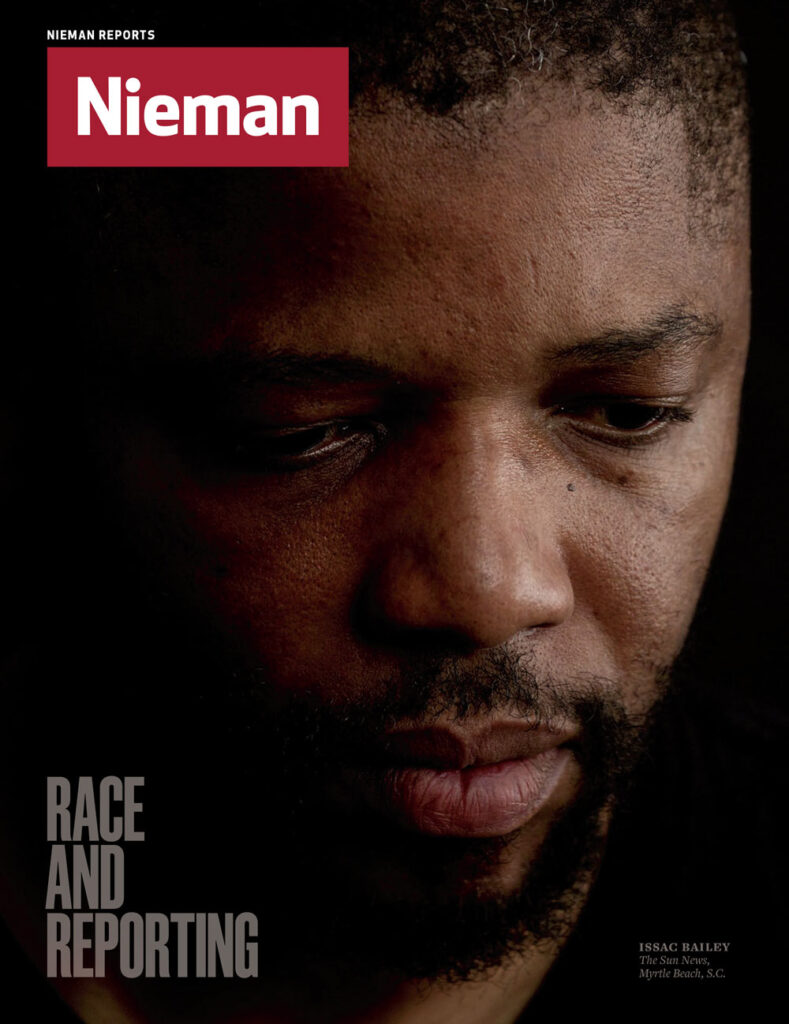For 11 years, I worked somewhere famous.
Now, I work somewhere virtually unknown.
In January, I left “All Things Considered” (“ATC”)—seven months since my Nieman fellowship ended—to create a position at NPR’s newly rebooted training unit, Editorial Coaching and Development. Still NPR, but no logo. No name recognition. Now, my job is to wave the flag for the best audio storytelling. To coach, create curriculum, and facilitate training.
My first challenge was more basic: To let the roughly 350 journalists at NPR News know we exist.
Sitting in my cubicle on week one, I could just barely glimpse the busy staff of “ATC” across the warehouse-sized newsroom. I could throw a ball and almost hit the “Hub”—the center of NPR’s news operations. So close, yet still so distant.
Of course, most journalists have become self-marketers in this new age of tweets. But how do you market something as un-sexy as the training team? One solution we came up with is the NPR Storytelling Tumblr. It’s a blog where we share quick, digestible lessons that emerge from NPR content, along with audio, images, and video. Each post features one story and one storytelling technique. (A sample headline: “Make a promise in your intro, and deliver on it.”) This is not revolutionary. But the Storytelling Tumblr gives us something we were lacking: A public platform where we can say, “We’re listening! And we are thinking about our craft every day.”
It’s also a chance to give journalists something they don’t hear enough: Praise. Specific praise.
Recall that story you reported or wrote or produced, and think of all the little decisions you made along the way. So much of the best work journalists do is invisible.
Now I realize my quest for visibility is not only about my new training team, but about everyone at NPR and its member stations. In the course of raising the profile of the un-sexy training unit, we’re making our craft visible. And that, of course, is the far more important mission.
Now, I work somewhere virtually unknown.
In January, I left “All Things Considered” (“ATC”)—seven months since my Nieman fellowship ended—to create a position at NPR’s newly rebooted training unit, Editorial Coaching and Development. Still NPR, but no logo. No name recognition. Now, my job is to wave the flag for the best audio storytelling. To coach, create curriculum, and facilitate training.
My first challenge was more basic: To let the roughly 350 journalists at NPR News know we exist.
Sitting in my cubicle on week one, I could just barely glimpse the busy staff of “ATC” across the warehouse-sized newsroom. I could throw a ball and almost hit the “Hub”—the center of NPR’s news operations. So close, yet still so distant.
Of course, most journalists have become self-marketers in this new age of tweets. But how do you market something as un-sexy as the training team? One solution we came up with is the NPR Storytelling Tumblr. It’s a blog where we share quick, digestible lessons that emerge from NPR content, along with audio, images, and video. Each post features one story and one storytelling technique. (A sample headline: “Make a promise in your intro, and deliver on it.”) This is not revolutionary. But the Storytelling Tumblr gives us something we were lacking: A public platform where we can say, “We’re listening! And we are thinking about our craft every day.”
It’s also a chance to give journalists something they don’t hear enough: Praise. Specific praise.
Recall that story you reported or wrote or produced, and think of all the little decisions you made along the way. So much of the best work journalists do is invisible.
Now I realize my quest for visibility is not only about my new training team, but about everyone at NPR and its member stations. In the course of raising the profile of the un-sexy training unit, we’re making our craft visible. And that, of course, is the far more important mission.



